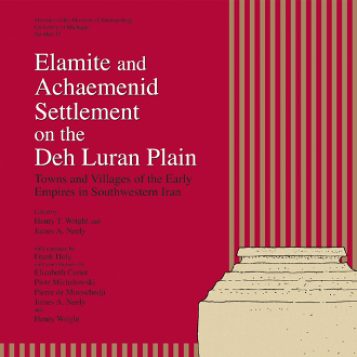47. Elamite and Achaemenid Settlement on the Deh Luran Plain: Towns and Villages of the Early Empires in Southwestern Iran
Henry T. Wright, James A. Neely (editors)
The Deh Luran Plain, nestled in the foothills of the Zagros Mountains close to the modern border between Iraq and Iran, had a long and rich prehistory, beginning with the local development of villages dependent upon rainfall farming and herding in the 8th millennium B.C. These developed into networks of villages and small centers exploiting irrigation and agriculture, and these became involved in the networks of exchange developing around the first state polities and urban societies during the 9th millennium B.C. This volume continues the account of the plain from the later 3rd millennium B.C. to the middle of the 1st millennium B.C., based primarily on the detailed surveys conducted by James A. Neely in 1969 and Pierre de Miroschedji in 1976, and on a review of excavations and ancient written sources relevant to this span of time. This study contains detailed site maps and descriptions, aerial and satellite images of major sites, statistics and drawings of ceramics, and discussions of the historical sources.
Order from Amazon.com.
See related books:
Memoir 13. An Early Town on the Deh Luran Plain: Excavations at Tepe Farukhabad, edited by Henry T. Wright.
Technical Report 26. Early Settlement and Irrigation on the Deh Luran Plain: Village and Early State Societies in Southwestern Iran, by James A. Neely and Henry T. Wright.
Publisher: Museum of Anthropology
Month of Publication: January
Year of Publication: 2010
Location: Ann Arbor, MI
# of Pages: 152
Price: $28
ISBN: 978-0-915703-72-2
Monograph Series / Number: Memoirs, 47
Tables / Illustrations: 12 tables, 52 figures, 8 color plates


